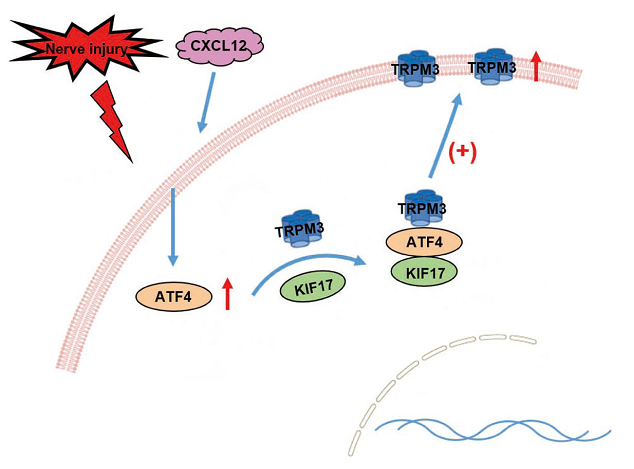AAV overexpression vectors was used for gene over-expression. (From
BrainVTA)
The viruses used in this article from BrainVTA are in the table below
|
Custom-Made AAV |
rAAV2/5-CMV-Atf4-2A-EGFP-WPRE-PA
rAAV2/5-CMV-Kif17-2A-EGFP-WPRE-PA
rAAV2/5-CMV-Atf4-ΔbZIP-2A-EGFP-WPRE-PA |
Man-Xiu Xie, Xian-Ying Cao, Wei-An Zeng, Ren-Chun Lai, Lan Guo, Jun-Chao Wang, Yi-Bin Xiao, Xi Zhang, Di Chen, Xian-Guo Liu, Xiao-Long Zhang
Pub Date: 2021-03-03,
DOI: 10.1038/s41467-021-21731-1,
Email: sales@brainvta.com
Effective treatments for patients suffering from heat hypersensitivity are lacking, mostly due to our limited understanding of the pathogenic mechanisms underlying this disorder. In the nervous system, activating transcription factor 4 (ATF4) is involved in the regulation of synaptic plasticity and memory formation. Here, we show that ATF4 plays an important role in heat nociception. Indeed, loss of ATF4 in mouse dorsal root ganglion (DRG) neurons selectively impairs heat sensitivity. Mechanistically, we show that ATF4 interacts with transient receptor potential cation channel subfamily M member-3 (TRPM3) and mediates the membrane trafficking of TRPM3 in DRG neurons in response to heat. Loss of ATF4 also significantly decreases the current and KIF17-mediated trafficking of TRPM3, suggesting that the KIF17/ATF4/TRPM3 complex is required for the neuronal response to heat stimuli. Our findings unveil the non-transcriptional role of ATF4 in the response to heat stimuli in DRG neurons.

Figure 1. Hypothetical model illustrating that ATF4 interacts with TRPM3 and KIF17 to form a complex to regulate the membrane trafficking of TRPM3 in sensory neurons and thus contributes to thermal sensitivity.
In this study, the authors revealed that ATF4 controls thermal, but not mechanical, sensitivity. Furthermore, ATF4 mediates the membrane localisation of TRPM3 in DRG neurons by interacting with the motor protein KIF17 and thus contributes to thermal sensitivity. Ultimately, the work reveals a cellular mechanism essential for heat nociception.
BrainVTA offers viral vector construction & virus packaging services for AAV, LV, RABV, PRV, HSV and VSV that help researchers explore questions about genes, neurons, circuitry structure, function of brain network, mechanism and treatment of diseases.
If you have any needs, just email us at
sales@brainvta.com.
